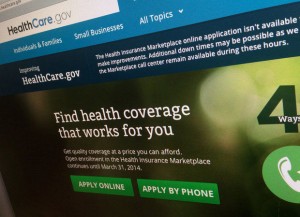 It’s that time of year again – open enrollment season. From employee health benefits to Medicare and health insurance purchased through the Affordable Care Act exchanges, now is the time to reassess and adjust various forms of benefits. For many Americans, this important event is simply not on their radar.
It’s that time of year again – open enrollment season. From employee health benefits to Medicare and health insurance purchased through the Affordable Care Act exchanges, now is the time to reassess and adjust various forms of benefits. For many Americans, this important event is simply not on their radar.
Why is open enrollment such an important time of year? With Americans spending a larger percentage of their income each year on soaring health care expenses, failing to recalibrate benefits to suite your changing needs can be costly. Unfortunately many workers and retirees miss open enrollment all together.
Dates to remember
Open enrollment period provides employees and retirees with the chance to add, adjust, or terminate various forms of coverage. For many types of benefits, missing this period may mean that you are unable to make any changes until the next open enrollment period - unless of course, you have experienced a special qualifying event such as divorce, marriage, child birth or adoption, etc. – just to name a few.
Medicare benefit open enrollment takes place from Oct.15 through Dec. 7. During this period, those on Medicare can switch between Medicare Advantage Plans and Original Medicare plans while also adding or dropping the assortment of prescription drug plans.
Health insurance purchased through the Affordable Care Act exchange has an open enrollment period that runs from Nov. 15 through Feb. 15, 2015. Keep in mind that this period is half as long as the original open enrollment so be sure not to wait until the last minute to review your coverage.
While employee benefit enrollment periods will vary from employer to employer, many schedule enrollment during the fall months so that new benefit elections can begin on Jan. 1. Consider speaking to your employee benefits representative to obtain the details on your plan’s window.
Educate yourself
The complexities of health benefits lead many Americans to make poor choices, selecting plans that are incongruent with their needs. After all, how can we be expected to choose the right benefits if we don’t even understand the benefits to begin with. The first step in the process is to educate and empower yourself.
The best way to combat these complexities and avoid unnecessary expenses is to lean on the many resources available. Be sure to carefully review enrollment documentation, online resources and speak to representatives from the respective benefits groups that can help. Consider visiting www.medicare.gov, www.healthcare.gov and your employer’s human resource department to begin the education process.
Next, consider tallying your previous health expenses from the last year. How do you and your family’s health care history and insurance needs fit with the various plans available? While reviewing your previous health care needs does not necessarily predict future expenses, it certainly can help you to match coverages to your needs. Also be sure to assess whether your current physicians and health care providers participate in the plans you are considering.
Zero in on employee benefits
Many working Americans often default to the base level of benefits provided by their employer, failing to take full advantage of all the options at their disposal. Life and disability insurance, flexible spending accounts (FSAs), health savings accounts (HSAs) and other cafeteria plans should be carefully reviewed to see if you should consider adding additional benefits.
In addition to medical benefits, open enrollment is a great time to review your life insurance coverage. According to the financial industry research group LIMRA, nearly 95 million Americans have no insurance. Additionally, 75 percent of windows and widowers whose spouses died between the ages of 30 and 55 felt there was inadequate insurance in place. While a lack of life insurance is a serious problem, many fail to take full advantage of the group life insurance benefits available. For example, perhaps your plan provides life insurance coverage of one times your annual salary by default but offers up to five times your annual salary for a nominal fee and no underwriting requirement. While group life insurance is not an end-all solution, it can serve as a foundation for the life insurance needs that many workers may have.
Disability insurance is another important, yet underutilized financial tool that should be considered as part of the open enrollment period. According to the Social Security Administration, just over one in four of today’s 20 year-olds will become disabled before reaching age 67. While there are pros and cons when comparing group disability to individual disability insurance, speak to your HR department to review the terms of any short or long term disability benefits and your options for additional coverage.
Next, be sure to review Flexible Spending Accounts or FSAs. Despite the significant tax benefits, FSAs are another benefit tool that is often overlooked by employees. If offered by your employer, an FSA allows eligible employees to set aside funds on a pre-tax basis to pay for eligible expenses.
There are two types of FSAs — medical care and dependent care and various everyday expenses are eligible and covered. Co-insurance, doctor co-pays, prescription drugs, over-the-counter drugs that are prescribed, chiropractic, psychiatric, dental, orthodontics, vision care and child-care services may all be eligible. Be careful to review contribution limits and forfeiture rules before getting started.
The ever-changing and evolving insurance and benefit landscape has made it difficult for many Americans to make the right choices. Taking advantage of open enrollment to carefully review and adjust your benefits can help ensure that you have the right plan for your needs. Consider speaking to an employee benefit specialist, insurance representative and your tax adviser to determine the most appropriate approach for you.
Kurt J. Rossi, MBA, CFP®, CRPC®, AIF® is a CERTIFIED FINANCIAL PLANNERtm Practitioner & Wealth Advisor. He can be reached for questions at 732-280-7550, kurt.rossi@Independentwm.com, www.bringyourfinancestolife.com & www.Independentwm.com. LPL Financial Member FINRA/SIPC.









